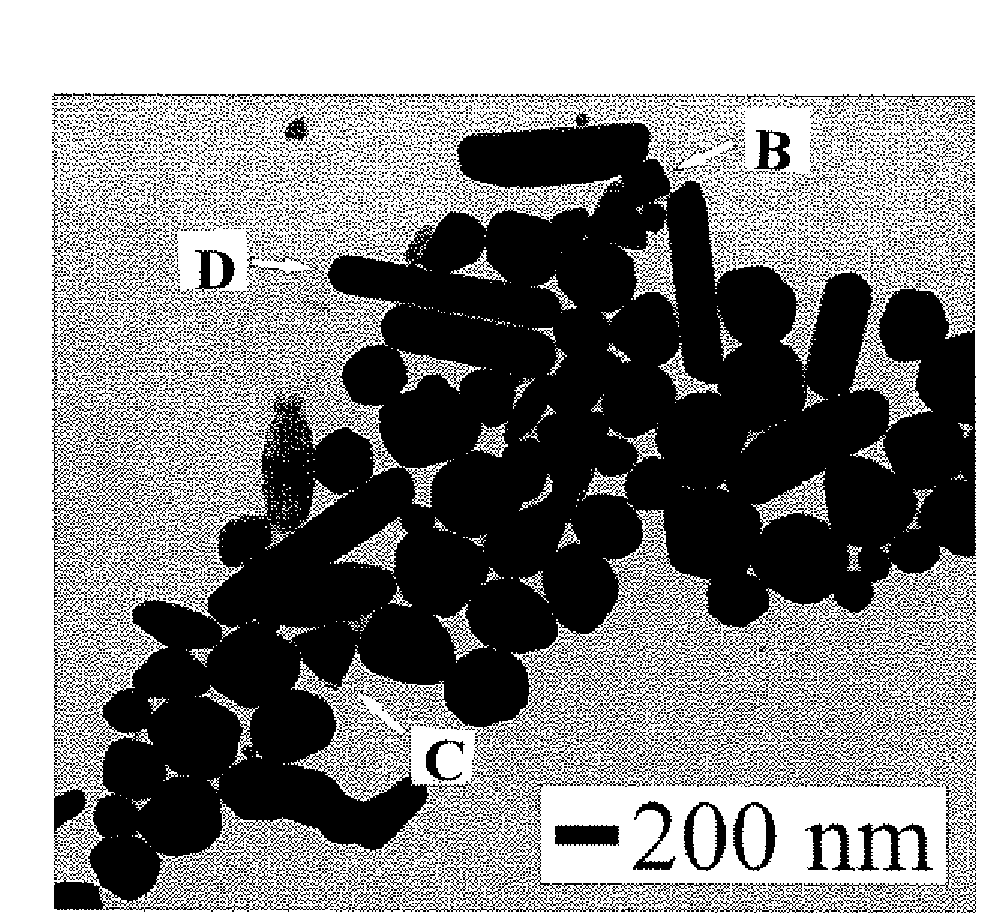Oxidation-resistant, ligand-capped copper nanoparticles and methods for fabricating them
a technology of ligand-capped copper nanoparticles and nanoparticles, which is applied in the direction of fluid resistance measurement, cellulosic plastic layered products, instruments, etc., can solve the problems of poor monodispersity of copper nanoparticles, poor stability of copper nanoparticles that resulted from these methods, and relatively limited success in synthesizing copper nanoparticles with controllable size, shape and surface properties. , to achieve the effect o
- Summary
- Abstract
- Description
- Claims
- Application Information
AI Technical Summary
Benefits of technology
Problems solved by technology
Method used
Image
Examples
example 1
Chemicals
[0047]Copper(II) acetyl acetonate (Cu(acac)2, 98% pure) was obtained from Lancaster Oleic acid (99%) was obtained from Alfa Aesar. 1,2-hexadecanediol (90%), octyl ether (99%), oleyl amine (70%), hexane, and other common solvents used were obtained from Aldrich. Argon gas was obtained from the Matheson Tri-Gas company.
example 2
Nanoparticle Preparation
[0048]Copper synthesis in organic suspension was achieved through the adaptation of a method used to synthesize FePt nanoparticles See Sun, S., et al., Science, 287: 1989 (2000), which is hereby incorporated by reference in its entirety. In the modified synthesis, copper(II) acetyl acetonate was added to octyl ether to create a 20 mM solution of copper(II). Then, 1,2-hexadecanediol was added to the solution (60 mM). The solution was heated under argon gas to a temperature of 105° C. with stirring. The solution was held at 105° C. for 10 minutes. Then, both oleic acid and oleyl amine capping agents were added to the solution to create 20 mM solutions of each. The solution was heated to higher temperatures, which was varied from 150 to 210° C. Once at the high temperature, the solution was left to react for 30 minutes. The solution was next cooled to room temperature. Finally, the reacted solution was mixed with ethanol and the particles were allowed to precipi...
example 3
Ultraviolet Visible Spectrometry (UV-Vis)
[0049]UV-Vis spectra were acquired with an HP 8453 spectrophotometer A quartz cell with a path-length of 1 cm was used and spectra were collected over the range of 200-1100 nm.
PUM
| Property | Measurement | Unit |
|---|---|---|
| particle size | aaaaa | aaaaa |
| particle size | aaaaa | aaaaa |
| temperature | aaaaa | aaaaa |
Abstract
Description
Claims
Application Information
 Login to View More
Login to View More - R&D
- Intellectual Property
- Life Sciences
- Materials
- Tech Scout
- Unparalleled Data Quality
- Higher Quality Content
- 60% Fewer Hallucinations
Browse by: Latest US Patents, China's latest patents, Technical Efficacy Thesaurus, Application Domain, Technology Topic, Popular Technical Reports.
© 2025 PatSnap. All rights reserved.Legal|Privacy policy|Modern Slavery Act Transparency Statement|Sitemap|About US| Contact US: help@patsnap.com



